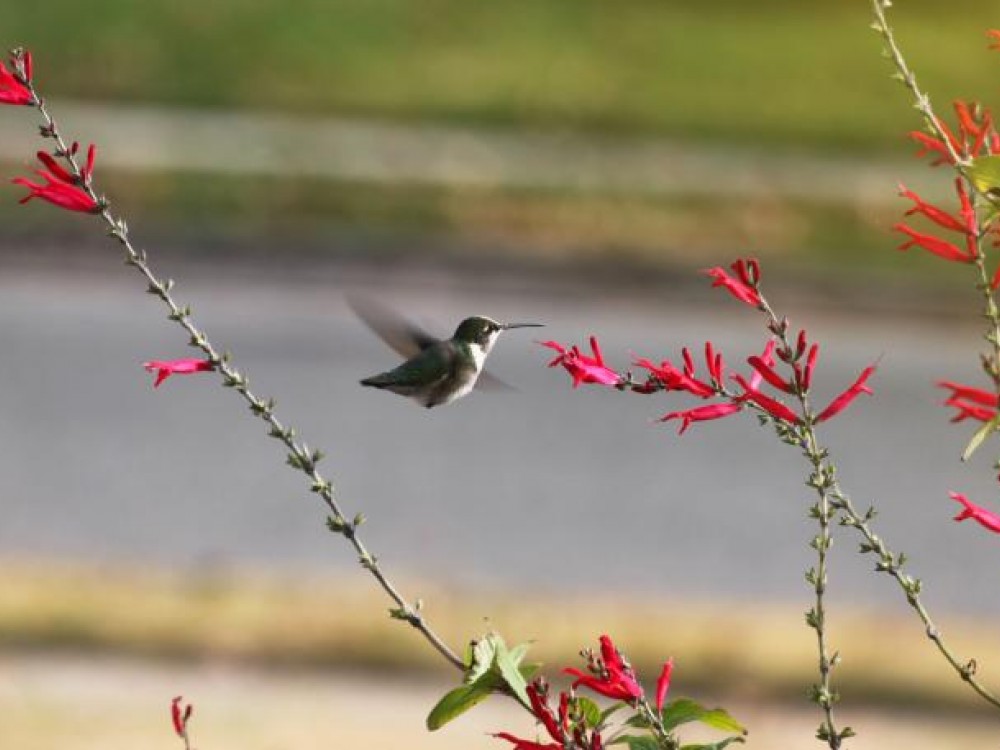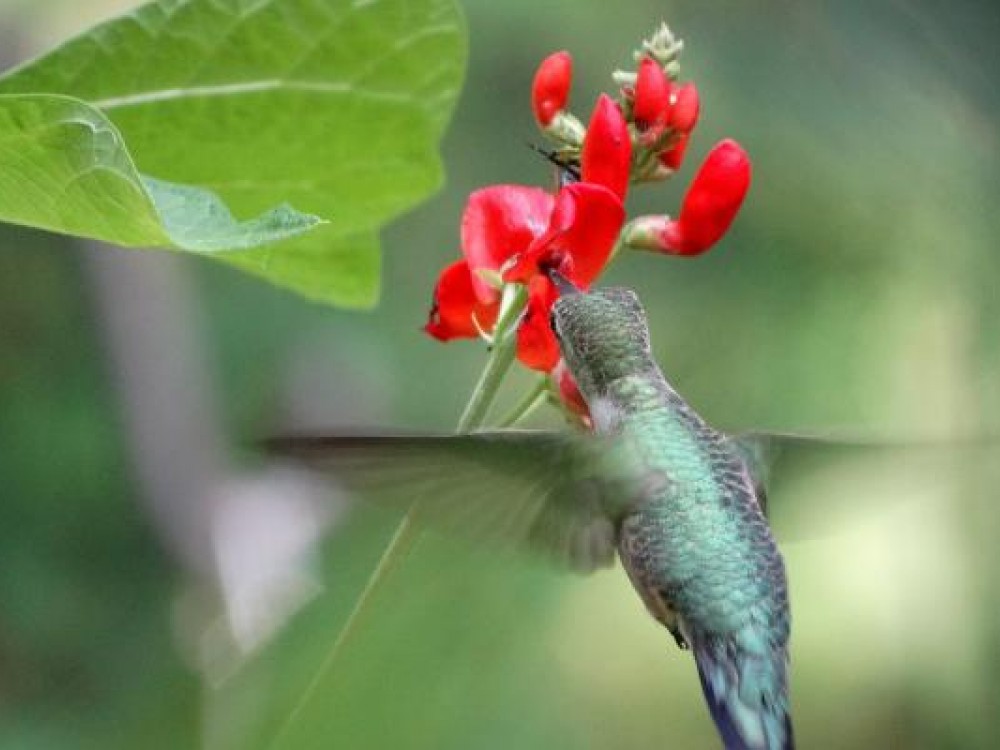Fall Nectar Sources
Hummingbirds are BIG eaters. While on migration they need a steady supply of food to fuel their flight. Finding nectar sources can mean the difference between life and death. This gallery of images, shared by Journey North observers, offers a few ideas for planting nectar-rich flowers that attract hummingbirds in late summer and fall.
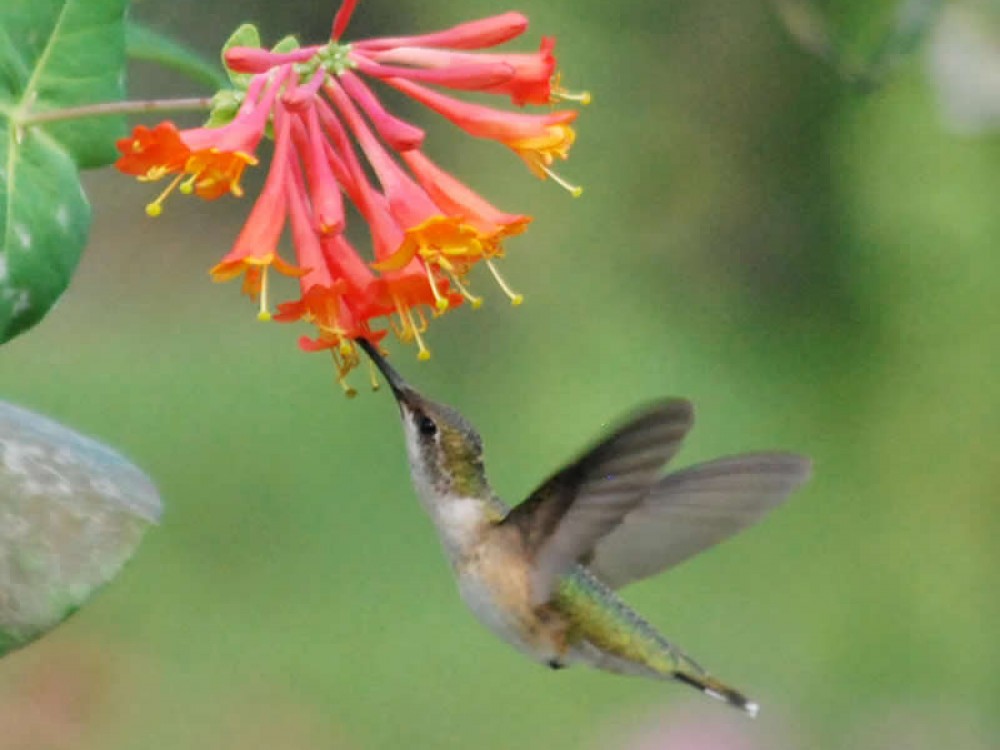
Trumpet Honeysuckle
Trumpet Honeysuckle, in the family called Lonicera, is a favorite nectar source for hummingbirds. The trumpet-shaped flowers can last summer through winter in southern states and Mexico. In Patrick Hughes' garden hummingbirds were feeding on sugar water and honeysuckle, but wouldn't touch salvia and million bells. Photo by Patrick Hughs
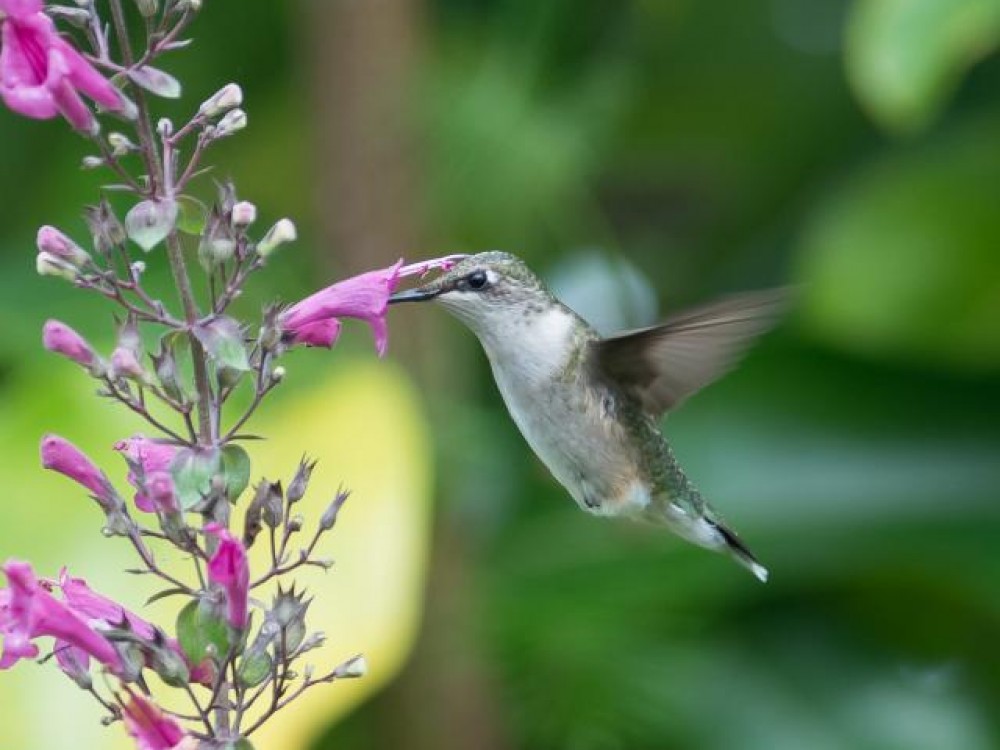
Penstemon
Penstemons, also known as beardtongues, are deciduous or semi-evergreen plants with flowers of a tubular shape. As you can see they are a perfect shape for delivering nectar to hummingbirds. Many species of penstemons are cultivated—and found in the wild. Photo by Linda Pontius

Spotted Jewelweed
Impatiens capensis, has many names including common jewelweed, the orange jewelweed, spotted jewelweed, spotted touch-me-not, and orange balsam. Jewelweed is an annual plant native to North America. It can be found along roadsides and in wet woodlands. This abundant flower blooms from late spring to early fall. Photo by Kristy Walker
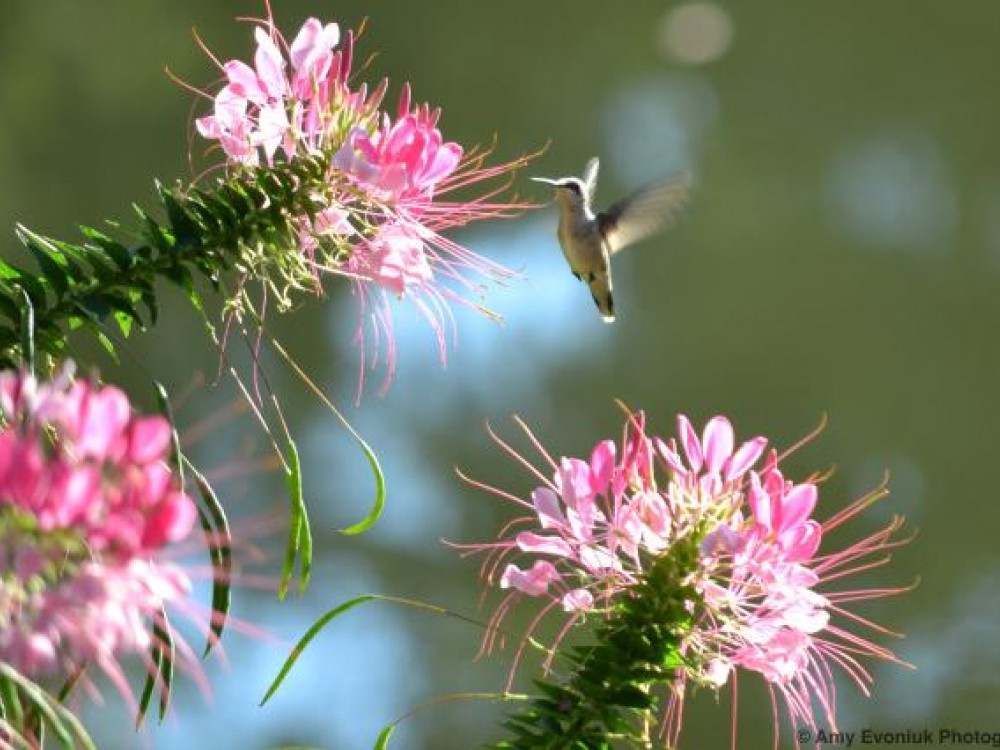
Cleome
Cleome, or Spider Flowers are popular annuals for the garden. They grow up to 2 meters tall each summer. They don't emit a noticeable fragrance, but hummingbirds and butterflies were drawn to the cleome, and zinnea flowers in Amy Evoniuk's yard. Photo by Amy Evoniuk
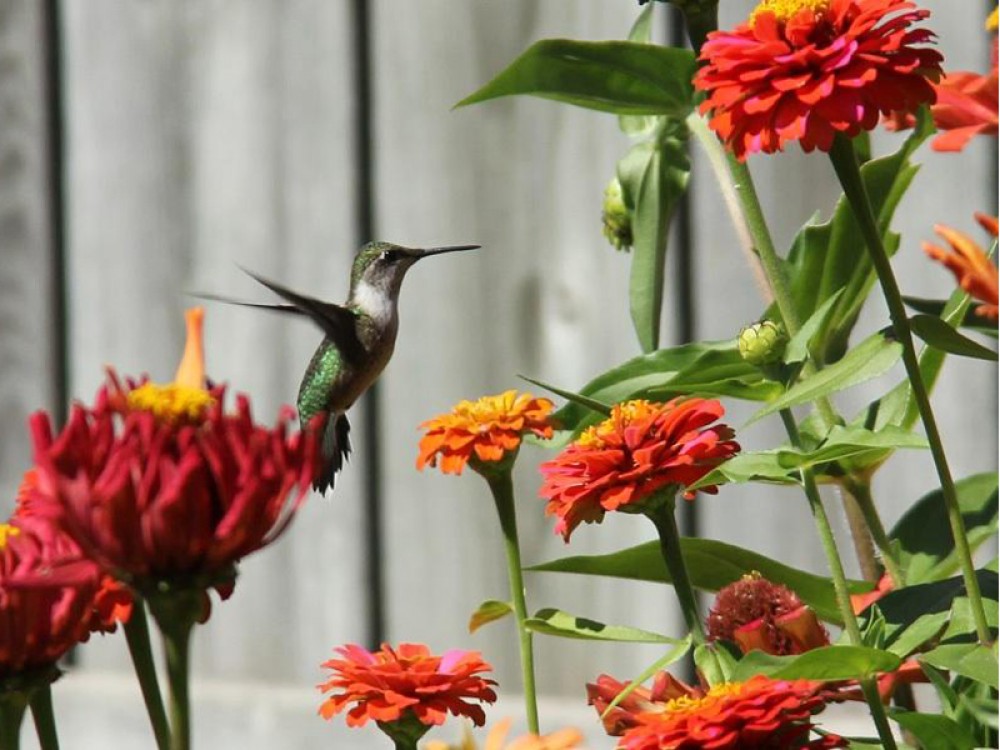
Zinneas
Zinnea elegans, also known as youth-and-age, is a member of the sunflower family. The solitary long-stemmed zinnea flowers come in many colors attractive to hummingbirds. Laura Wikston photographed this one on its fall journey south. Photo by Laura Wikston

Salvia
Salvias are plants in the sage family Lamiaceae. There are many species in this genus, including a number in north America. Photo by Keith DeClercq
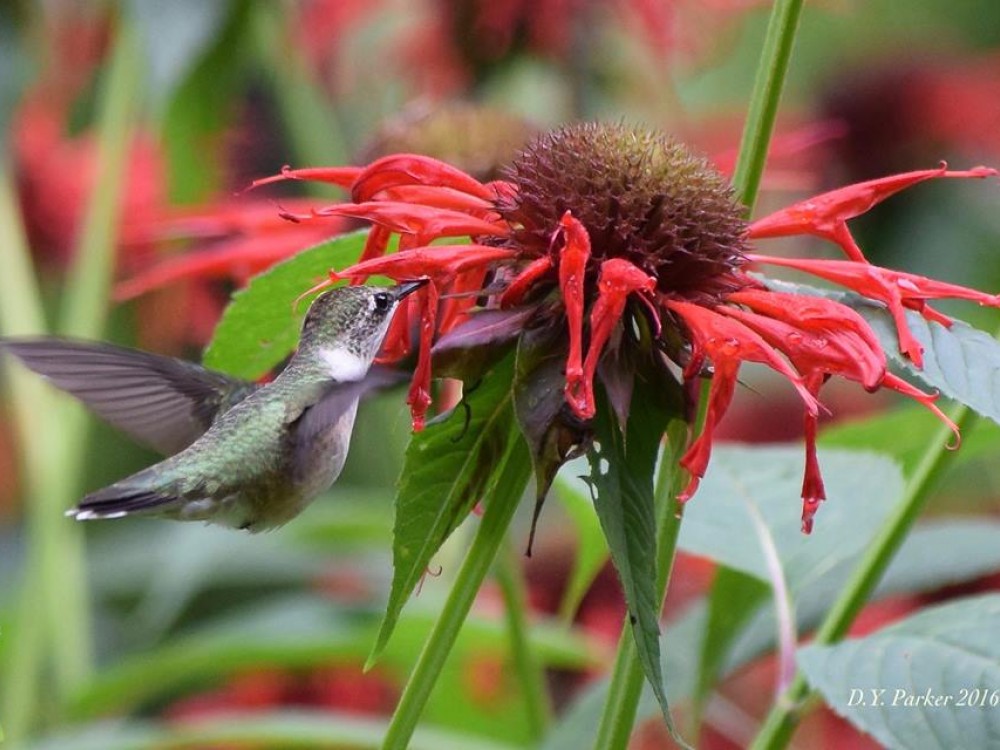
Monarda
Monarda, also known as Bee Balm or Bergamot, is a hardy, aromatic herb in the mint family. The red, pink, or lavender tubular flowers are long-lasting and attract hummingbirds from summer to late fall. In late summer David Parker's bee balm patch was sure to be filled with hummers every morning. Photo by David Parker
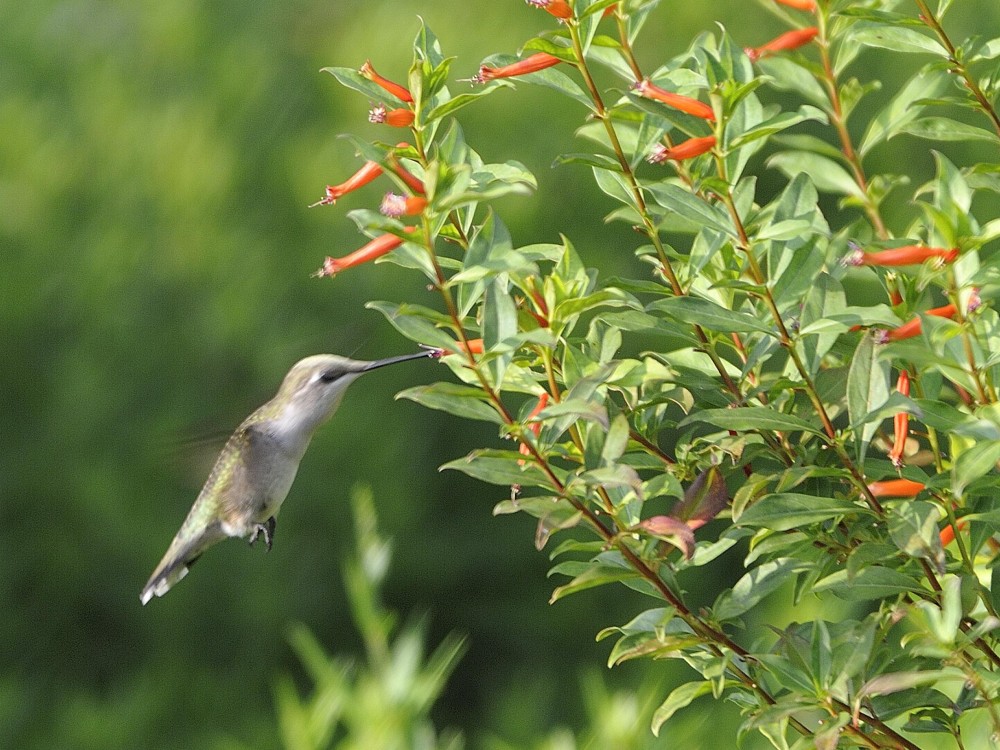
Cuphea
Cuphea, also known as cigar plant or firecracker plant, is a genus containing about 260 species of annual and perennial flowering plants. Native to warm, temperate-to-tropical regions of the Americas, these native flowers are often used in gardens to lure in hummingbirds. David Griffith's garden is stocked with shrimp plants, Turk's Cap lilies, Autumn sage and the large abundant flowering Cuphea. Photo by David Griffith

